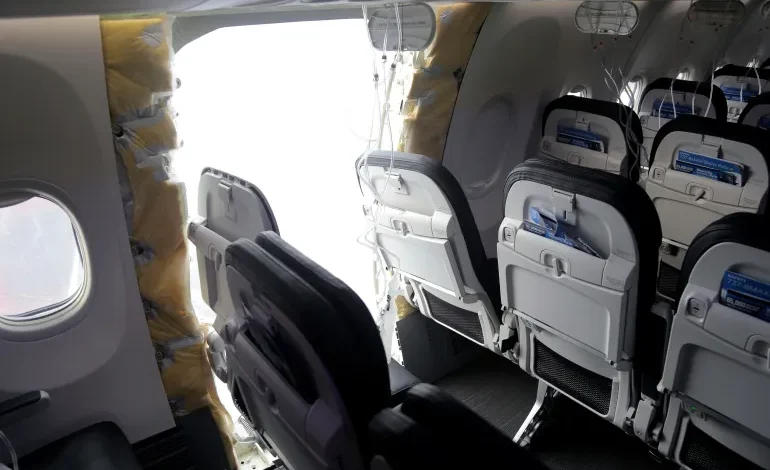Federal safety investigators have sharply criticized Boeing for a series of preventable missteps that led to a terrifying midair emergency aboard an Alaska Airlines flight in early 2024. The findings, revealed during a public hearing held by the National Transportation Safety Board (NTSB), point to serious lapses in training, quality control, and oversight that allowed a panel on the Boeing 737 MAX 9 to detach mid-flight.
The January 5, 2024 incident occurred shortly after Alaska Airlines Flight 1282 departed from Portland, Oregon. At around 16,000 feet, a door plug — a panel used to seal an inactive emergency exit — blew off the aircraft’s fuselage, causing a sudden decompression. Passengers and crew were jolted as cabin pressure plummeted, with seat belts, oxygen masks, and personal belongings swept toward the gaping hole. Though no one was killed, three people sustained minor injuries, and the incident sent shockwaves through the aviation industry.
In its report, the NTSB concluded that Boeing had failed to ensure that the panel was properly secured during final assembly. Investigators discovered that four critical bolts meant to hold the panel in place were missing. The panel had been removed for rivet repairs, but no documentation or confirmation of proper reinstallation could be found. Only one of the 24 workers on the door team had prior hands-on experience with the component, and Boeing failed to mandate structured training for such tasks.
The safety board described the failure as “entirely preventable,” stating that Boeing’s internal audits had identified lapses in manufacturing standards years earlier, but those warnings were never fully addressed. It also found fault with the Federal Aviation Administration (FAA), accusing the regulator of inadequate oversight, insufficient inspection practices, and limited record-keeping that obscured recurring safety risks.
To address the failures, the NTSB issued 19 safety recommendations. These include a redesign of the door plug system, third-party oversight of Boeing’s quality processes, and improved training protocols. The FAA was urged to strengthen its audit program, extend documentation retention timelines, and proactively identify patterns of noncompliance within the aerospace industry.
Boeing acknowledged the findings and expressed “regret” over the incident. Company officials pledged to implement safety reforms, including hiring a new senior quality officer and reviewing internal procedures. The FAA has already limited Boeing’s monthly MAX production to 38 aircraft until the company demonstrates consistent compliance with safety standards.
The January blowout follows a string of troubling events for Boeing, including two fatal 737 MAX crashes in 2018 and 2019 and a deadly 787 Dreamliner accident last year. While those tragedies were linked to design flaws, the MAX 9 incident has drawn attention to lapses in basic manufacturing and quality assurance.
“The problem is not just one missing bolt,” said one NTSB member during the hearing. “It’s a pattern — a breakdown in how safety is treated from the factory floor all the way to final inspection.”
With input from Al Jazeera










The latest news in your social feeds
Subscribe to our social media platforms to stay tuned